My 40-liter backpack travel guide
2022 Jun 20
See all posts
My 40-liter backpack travel guide
Special thanks to Liam Horne for feedback and review. I received
no money from and have never even met any of the companies making the
stuff I'm shilling here (with the sole exception of Unisocks); this is
all just an honest listing of what works for me today.
I have lived as a nomad for the last nine years, taking 360 flights
travelling over 1.5 million kilometers (assuming flight paths are
straight, ignoring layovers) during that time. During this time, I've
considerably optimized the luggage I carry along with me: from a
60-liter shoulder bag with a separate laptop bag, to a 60-liter shoulder
bag that can contain the laptop bag, and now to a 40-liter packpage that
can contain the laptop bag along with all the supplies I need to live my
life.
The purpose of this post will be to go through the contents, as well
as some of the tips that I've learned for how you too can optimize your
travel life and never have to wait at a luggage counter again. There is
no obligation to follow this guide in its entirety; if you have
important needs that differ from mine, you can still get a lot of the
benefits by going a hybrid route, and I will talk about these options
too.
This guide is focused on my own experiences; plenty of other people
have made their own guides and you should look at them too. /r/onebag is an excellent
subreddit for this.

The backpack, with the various sub-bags laid out separately. Yes,
this all fits in the backpack, and without that much effort to pack and
unpack.
As a point of high-level organization, notice the bag-inside-a-bag
structure. I have a T-shirt bag, an underwear bag, a sock bag, a
toiletries bag, a dirty-laundry bag, a medicine bag, a laptop bag, and
various small bags inside the inner compartment of my backpack, which
all fit into a 40-liter
Hynes Eagle backpack. This structure makes it easy to keep things
organized.
It's like
frugality, but for cm3 instead of dollars
The general principle that you are trying to follow is that you're
trying to stay within a "budget" while still making sure you have
everything that you need - much like normal financial planning of the
type that almost everyone, with the important exception of crypto
participants during bull runs, is used to dealing with. A key difference
here is that instead of optimizing for dollars, you're optimizing for
cubic centimeters. Of course, none of the things that I
recommend here are going to be particularly hard on your dollars either,
but minimizing cm3 is the primary objective.
What do I mean by this? Well, I mean getting items like this:
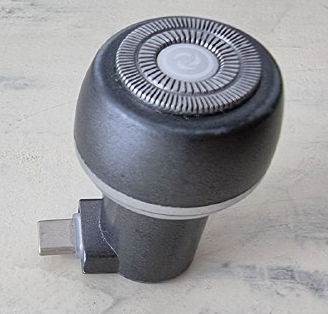
Electric shaver. About 5cm long and 2.5cm wide at the top.
No charger or handle is required: it's USBC pluggable, your phone is the
charger and handle. Buy on
Amazon here (told you it's not hard on your
dollars!)
And this:
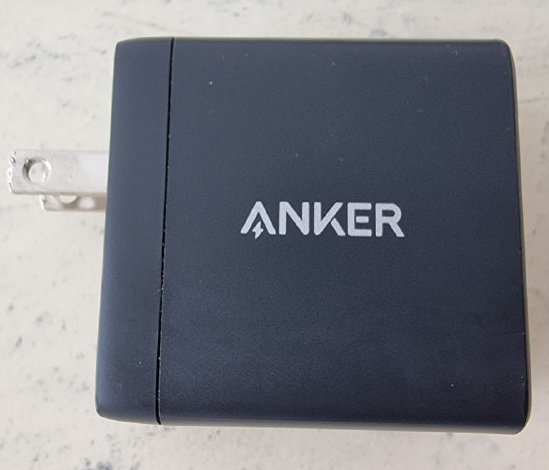
Charger for mobile phone and laptop (can charge both at the
same time)! About 5x5x2.5 cm. Buy here.
And there's more. Electric toothbrushes are normally known for being
wide and bulky. But they don't have to be! Here
is an electric toothbrush that is rechargeable, USBC-friendly (so no
extra charging equipment required), only slightly wider than a regular
toothbrush, and costs about $30, plus a couple dollars every few months
for replacement brush heads. For connecting to various different
continents' plugs, you can either use any
regular reasonably small universal adapter, or get the Zendure
Passport III which combines a universal adapter with a charger, so
you can plug in USBC cables to charge your laptop and multiple other
devices directly (!!).
As you might have noticed, a key ingredient in making this
work is to be a USBC maximalist. You should strive to ensure that every
single thing you buy is USBC-friendly. Your laptop, your phone,
your toothbrush, everything. This ensures that you don't need to carry
any extra equipment beyond one charger and 1-2 charging cables. In the
last ~3 years, it has become much easier to live the USBC maximalist
life; enjoy it!
Be a Uniqlo maximalist
For clothing, you have to navigate a tough tradeoff between price,
cm3 and the clothing looking reasonably good. Fortunately,
many of the more modern brands do a great job of fulfilling all three at
the same time! My current strategy is to be a Uniqlo maximalist:
altogether, about 70% of the clothing items in my bag are from
Uniqlo.
This includes:
- 8 T-shirts, of which 6 are this
type from Uniqlo
- 8 pairs of underwear, mostly various Uniqlo products
- 8 socks, of which none are Uniqlo (I'm less confident about what to
do with socks than with other clothing items, more on this later)
- Heat-tech tights,
from Uniqlo
- Heat-tech sweater, from Uniqlo
- Packable jacket, from Uniqlo
- Shorts that also double as a swimsuit, from.... ok fine, it's also
Uniqlo.
There are other stores that can give you often equally good products,
but Uniqlo is easily accessible in many (though not all) of the regions
I visit and does a good job, so I usually just start and stop there.
Socks
Socks are a complicated balancing act between multiple desired
traits:
- Low cm3
- Easy to put on
- Warm (when needed)
- Comfortable
The ideal scenario is if you find low-cut
or ankle socks comfortable to wear, and you never go to cold
climates. These are very low on cm3, so you can just buy
those and be happy. But this doesn't work for me: I sometimes visit cold
areas, I don't find ankle socks comfortable and prefer something a bit
longer, and I need to be comfortable for my long runs. Furthermore, my
large foot size means that Uniqlo's one-size-fits-all approach does not
work well for me: though I can put the socks on, it often takes a long
time to do so (especially after a shower), and the socks rip often.
So I've been exploring various brands to try to find a solution
(recently trying CEP and DarnTough).
I generally try to find socks that cover the ankle but don't go much
higher than that, and I have one pair of long ones for when I go to the
snowier places. My sock bag is currently larger than my underwear bag,
and only a bit smaller than my T-shirt bag: both a sign of the challenge
of finding good socks, and a testament to Uniqlo's amazing Airism
T-shirts. Once you do find a pair of socks that you like, ideally you
should just buy many copies of the same type. This removes the effort of
searching for a matching pair in your bag, and it ensures that if one of
your socks rips you don't have to choose between losing the whole pair
and wearing mismatched socks.
For shoes, you probably want to limit yourself to at most two: some
heavier shoes that you can just wear, and some very cm3-light
alternative, such as flip-flops.
Layers
There is a key mathematical reason why dressing in layers is a good
idea: it lets you cover many possible temperature ranges with fewer
clothing items.
You want to keep the T-shirt on in all cases, to protect the other
layers from getting dirty. But aside from that, the general rule is: if
you choose N clothing items, with levels of warmness spread out across
powers of two, then you can be comfortable in \(2^N\) different temperature ranges by
binary-encoding the expected temperature in the clothing you wear. For
not-so-cold climates, two layers (sweater and jacket) are fine. For a
more universal range of climates you'll want three layers: light
sweater, heavy sweater and heavy jacket, which can cover \(2^3 = 8\) different temperature ranges all
the way from summer to Siberian winter (of course, heavy winter jackets
are not easily packable, so you may have to just wear it when you get on
the plane).
This layering principle applies not just to upper-wear, but also
pants. I have a pair of thin pants plus Uniqlo tights, and I can wear
the thin pants alone in warmer climates and put the Uniqlo tights under
them in colder climates. The tights also double as pyjamas.
My miscellaneous stuff
The internet constantly yells at me for not having a good microphone.
I solved this problem by getting a portable microphone!
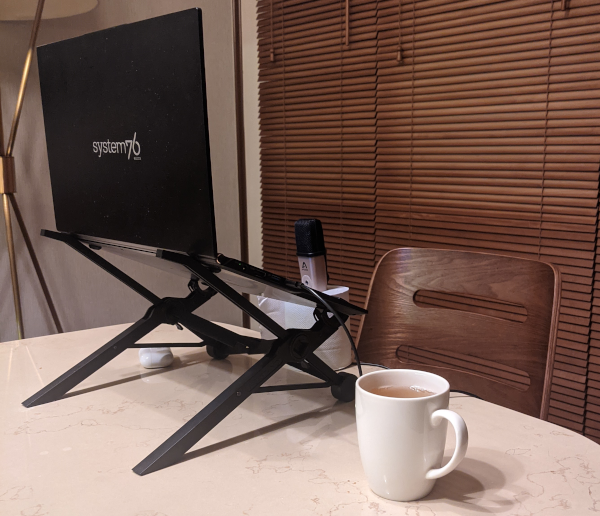
My workstation, using the Apogee HypeMIC
travel microphone (unfortunately micro-USB, not USBC). A toilet paper
roll works great as a stand, but I've also found that having a stand is
not really necessary and you can just let the microphone lie down beside
your laptop.
Next, my laptop stand. Laptop stands are great for
improving your posture. I have two recommendations for laptop stands,
one medium-effective but very light on cm3, and one very
effective but heavier on cm3.
Nexstand is the one in the picture above. Majextand is the one glued
to the bottom of my laptop now:
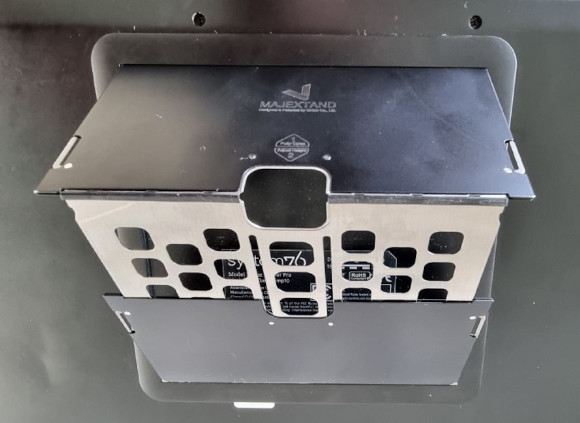
I have used both, and recommend both. In addition to this I also have
another piece of laptop gear: a 20000
mAh laptop-friendly power bank. This adds even more to my laptop's
already decent battery life, and makes it generally easy to live on the
road.
Now, my medicine bag:

This contains a combination of various life-extension medicines
(metformin, ashwagandha, and some vitamins), and covid defense gear: a
CO2 meter (CO2 concentration minus 420 roughly gives you how much
human-breathed-out air you're breathing in, so it's a good proxy for
virus risk), masks, antigen tests and fluvoxamine. The tests were a free
care package from the Singapore government, and they happened to be
excellent on cm3 so I carry them around. Covid defense and
life extension are both fields where the science is rapidly evolving, so
don't blindly follow this static list; follow the science yourself or
listen to the latest advice of an expert that you do trust. Air filters
and far-UVC (especially 222 nm) lamps are also promising covid defense
options, and portable versions exist for both.
At this particular time I don't happen to have a first aid kit with
me, but in general it's also recommended; plenty of good travel options
exist, eg. this.
Finally, mobile data. Generally, you want to make
sure you have a phone that supports eSIM. These days, more and more
phones do. Wherever you go, you can buy an eSIM for that place online. I
personally use Airalo, but there
are many options. If you are lazy, you can also just use Google Fi, though in my
experience Google Fi's quality and reliability of service tends to be
fairly mediocre.
Have some fun!
Not everything that you have needs to be designed around
cm3 minimization. For me personally, I have four items that
are not particularly cm3 optimized but that I still really
enjoy having around.
|
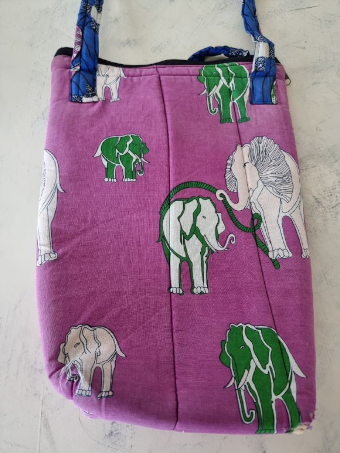
My laptop bag, bought in an outdoor market in Zambia.
|
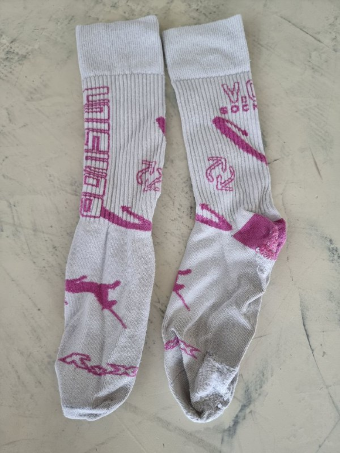
Unisocks.
|
|
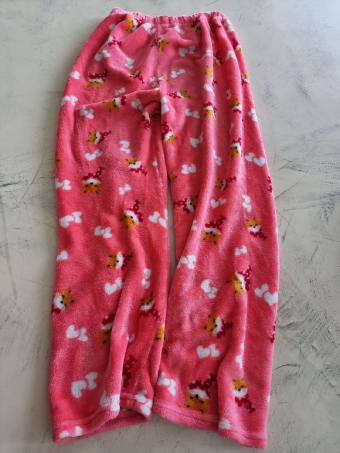
Sweatpants for indoor use, that are either fox-themed or Shiba
Inu-themed depending on whom you ask.
|

Gloves (phone-friendly): I bought the left one for $4 in Mong Kok
and the right one for $5 in Chinatown, Toronto back in 2016. By
coincidence, I lost different ones from each pair, so the remaining two
match. I keep them around as a reminder of the time when money was much
more scarce for me.
|
The more you save space on the boring stuff, the more you can leave
some space for a few special items that can bring the most joy to your
life.
How to stay sane as a nomad
Many people find the nomad lifestyle to be disorienting, and report
feeling comfort from having a "permanent base". I find myself not really
having these feelings: I do feel disorientation when I change locations
more than once every ~7 days, but as long as I'm in the same place for
longer than that, I acclimate and it "feels like home". I can't tell how
much of this is my unique difficult-to-replicate personality traits, and
how much can be done by anyone. In general, some tips that I recommend
are:
- Plan ahead: make sure you know where you'll be at
least a few days in advance, and know where you're going to go when you
land. This reduces feelings of uncertainty.
- Have some other regular routine: for me, it's as
simple as having a piece of dark chocolate and a cup of tea every
morning (I prefer Bigelow
green tea decaf, specifically the 40-packs, both because it's the
most delicious decaf green tea I've tried and because it's packaged in a
four-teabag-per-bigger-bag format that makes it very convenient and at
the same time cm3-friendly). Having some part of
your lifestyle the same every day helps me feel grounded. The more
digital your life is, the more you get this "for free" because you're
staring into the same computer no matter what physical location you're
in, though this does come at the cost of nomadding potentially providing
fewer benefits.
- Your nomadding should be embedded in some
community: if you're just being a lowest-common-denominator
tourist, you're doing it wrong. Find people in the places you visit who
have some key common interest (for me, of course, it's blockchains).
Make friends in different cities. This helps you learn about the places
you visit and gives you an understanding of the local culture in a way
that "ooh look at the 800 year old statue of the emperor" never will.
Finally, find other nomad friends, and make sure to intersect with them
regularly. If home can't be a single place, home can be the people you
jump places with.
- Have some semi-regular bases: you don't have to
keep visiting a completely new location every time. Visiting a place
that you have seen before reduces mental effort and adds to the feeling
of regularity, and having places that you visit frequently gives you
opportunities to put stuff down, and is important if you want your
friendships and local cultural connections to actually develop.
How to compromise
Not everyone can survive with just the items I have. You might have
some need for heavier clothing that cannot fit inside one backpack. You
might be a big nerd in some physical-stuff-dependent field: I know life
extension nerds, covid defense nerds, and many more. You might really
love your three monitors and keyboard. You might have children.
The 40-liter backpack is in my opinion a truly ideal size if you
can manage it: 40 liters lets you carry a week's worth of
stuff, and generally all of life's basic necessities, and it's at the
same time very carry-friendly: I have never had it rejected from
carry-on in all the flights on many kinds of airplane that I have taken
it, and when needed I can just barely stuff it under the seat in front
of me in a way that looks legit to staff. Once you start going lower
than 40 liters, the disadvantages start stacking up and exceeding the
marginal upsides. But if 40 liters is not enough for you, there are two
natural fallback options:
- A larger-than-40 liter backpack. You can find 50 liter
backpacks, 60 liter
backpacks or even
larger (I highly recommend backpacks over shoulder bags for carrying
friendliness). But the higher you go, the more tiring it is to carry,
the more risk there is on your spine, and the more you incur the risk
that you'll have a difficult situation bringing it as a carry-on on the
plane and might even have to check it.
- Backpack plus mini-suitcase. There are plenty of carry-on
suitcases that you can buy. You can often make it onto a plane with
a backpack and a mini-suitcase. This depends on you: you may
find this to be an easier-to-carry option than a really big backpack.
That said, there is sometimes a risk that you'll have a hard time
carrying it on (eg. if the plane is very full) and occasionally you'll
have to check something.
Either option can get you up to a respectable 80 liters, and still
preserve a lot of the benefits of the 40-liter backpack
lifestyle. Backpack plus mini-suitcase generally seems to be more
popular than the big backpack route. It's up to you to decide which
tradeoffs to take, and where your personal values lie!
My 40-liter backpack travel guide
2022 Jun 20 See all postsSpecial thanks to Liam Horne for feedback and review. I received no money from and have never even met any of the companies making the stuff I'm shilling here (with the sole exception of Unisocks); this is all just an honest listing of what works for me today.
I have lived as a nomad for the last nine years, taking 360 flights travelling over 1.5 million kilometers (assuming flight paths are straight, ignoring layovers) during that time. During this time, I've considerably optimized the luggage I carry along with me: from a 60-liter shoulder bag with a separate laptop bag, to a 60-liter shoulder bag that can contain the laptop bag, and now to a 40-liter packpage that can contain the laptop bag along with all the supplies I need to live my life.
The purpose of this post will be to go through the contents, as well as some of the tips that I've learned for how you too can optimize your travel life and never have to wait at a luggage counter again. There is no obligation to follow this guide in its entirety; if you have important needs that differ from mine, you can still get a lot of the benefits by going a hybrid route, and I will talk about these options too.
This guide is focused on my own experiences; plenty of other people have made their own guides and you should look at them too. /r/onebag is an excellent subreddit for this.
The backpack, with the various sub-bags laid out separately. Yes, this all fits in the backpack, and without that much effort to pack and unpack.
As a point of high-level organization, notice the bag-inside-a-bag structure. I have a T-shirt bag, an underwear bag, a sock bag, a toiletries bag, a dirty-laundry bag, a medicine bag, a laptop bag, and various small bags inside the inner compartment of my backpack, which all fit into a 40-liter Hynes Eagle backpack. This structure makes it easy to keep things organized.
It's like frugality, but for cm3 instead of dollars
The general principle that you are trying to follow is that you're trying to stay within a "budget" while still making sure you have everything that you need - much like normal financial planning of the type that almost everyone, with the important exception of crypto participants during bull runs, is used to dealing with. A key difference here is that instead of optimizing for dollars, you're optimizing for cubic centimeters. Of course, none of the things that I recommend here are going to be particularly hard on your dollars either, but minimizing cm3 is the primary objective.
What do I mean by this? Well, I mean getting items like this:
Electric shaver. About 5cm long and 2.5cm wide at the top. No charger or handle is required: it's USBC pluggable, your phone is the charger and handle. Buy on Amazon here (told you it's not hard on your dollars!)
And this:
Charger for mobile phone and laptop (can charge both at the same time)! About 5x5x2.5 cm. Buy here.
And there's more. Electric toothbrushes are normally known for being wide and bulky. But they don't have to be! Here is an electric toothbrush that is rechargeable, USBC-friendly (so no extra charging equipment required), only slightly wider than a regular toothbrush, and costs about $30, plus a couple dollars every few months for replacement brush heads. For connecting to various different continents' plugs, you can either use any regular reasonably small universal adapter, or get the Zendure Passport III which combines a universal adapter with a charger, so you can plug in USBC cables to charge your laptop and multiple other devices directly (!!).
As you might have noticed, a key ingredient in making this work is to be a USBC maximalist. You should strive to ensure that every single thing you buy is USBC-friendly. Your laptop, your phone, your toothbrush, everything. This ensures that you don't need to carry any extra equipment beyond one charger and 1-2 charging cables. In the last ~3 years, it has become much easier to live the USBC maximalist life; enjoy it!
Be a Uniqlo maximalist
For clothing, you have to navigate a tough tradeoff between price, cm3 and the clothing looking reasonably good. Fortunately, many of the more modern brands do a great job of fulfilling all three at the same time! My current strategy is to be a Uniqlo maximalist: altogether, about 70% of the clothing items in my bag are from Uniqlo.
This includes:
There are other stores that can give you often equally good products, but Uniqlo is easily accessible in many (though not all) of the regions I visit and does a good job, so I usually just start and stop there.
Socks
Socks are a complicated balancing act between multiple desired traits:
The ideal scenario is if you find low-cut or ankle socks comfortable to wear, and you never go to cold climates. These are very low on cm3, so you can just buy those and be happy. But this doesn't work for me: I sometimes visit cold areas, I don't find ankle socks comfortable and prefer something a bit longer, and I need to be comfortable for my long runs. Furthermore, my large foot size means that Uniqlo's one-size-fits-all approach does not work well for me: though I can put the socks on, it often takes a long time to do so (especially after a shower), and the socks rip often.
So I've been exploring various brands to try to find a solution (recently trying CEP and DarnTough). I generally try to find socks that cover the ankle but don't go much higher than that, and I have one pair of long ones for when I go to the snowier places. My sock bag is currently larger than my underwear bag, and only a bit smaller than my T-shirt bag: both a sign of the challenge of finding good socks, and a testament to Uniqlo's amazing Airism T-shirts. Once you do find a pair of socks that you like, ideally you should just buy many copies of the same type. This removes the effort of searching for a matching pair in your bag, and it ensures that if one of your socks rips you don't have to choose between losing the whole pair and wearing mismatched socks.
For shoes, you probably want to limit yourself to at most two: some heavier shoes that you can just wear, and some very cm3-light alternative, such as flip-flops.
Layers
There is a key mathematical reason why dressing in layers is a good idea: it lets you cover many possible temperature ranges with fewer clothing items.
You want to keep the T-shirt on in all cases, to protect the other layers from getting dirty. But aside from that, the general rule is: if you choose N clothing items, with levels of warmness spread out across powers of two, then you can be comfortable in \(2^N\) different temperature ranges by binary-encoding the expected temperature in the clothing you wear. For not-so-cold climates, two layers (sweater and jacket) are fine. For a more universal range of climates you'll want three layers: light sweater, heavy sweater and heavy jacket, which can cover \(2^3 = 8\) different temperature ranges all the way from summer to Siberian winter (of course, heavy winter jackets are not easily packable, so you may have to just wear it when you get on the plane).
This layering principle applies not just to upper-wear, but also pants. I have a pair of thin pants plus Uniqlo tights, and I can wear the thin pants alone in warmer climates and put the Uniqlo tights under them in colder climates. The tights also double as pyjamas.
My miscellaneous stuff
The internet constantly yells at me for not having a good microphone. I solved this problem by getting a portable microphone!
My workstation, using the Apogee HypeMIC travel microphone (unfortunately micro-USB, not USBC). A toilet paper roll works great as a stand, but I've also found that having a stand is not really necessary and you can just let the microphone lie down beside your laptop.
Next, my laptop stand. Laptop stands are great for improving your posture. I have two recommendations for laptop stands, one medium-effective but very light on cm3, and one very effective but heavier on cm3.
Nexstand is the one in the picture above. Majextand is the one glued to the bottom of my laptop now:
I have used both, and recommend both. In addition to this I also have another piece of laptop gear: a 20000 mAh laptop-friendly power bank. This adds even more to my laptop's already decent battery life, and makes it generally easy to live on the road.
Now, my medicine bag:
This contains a combination of various life-extension medicines (metformin, ashwagandha, and some vitamins), and covid defense gear: a CO2 meter (CO2 concentration minus 420 roughly gives you how much human-breathed-out air you're breathing in, so it's a good proxy for virus risk), masks, antigen tests and fluvoxamine. The tests were a free care package from the Singapore government, and they happened to be excellent on cm3 so I carry them around. Covid defense and life extension are both fields where the science is rapidly evolving, so don't blindly follow this static list; follow the science yourself or listen to the latest advice of an expert that you do trust. Air filters and far-UVC (especially 222 nm) lamps are also promising covid defense options, and portable versions exist for both.
At this particular time I don't happen to have a first aid kit with me, but in general it's also recommended; plenty of good travel options exist, eg. this.
Finally, mobile data. Generally, you want to make sure you have a phone that supports eSIM. These days, more and more phones do. Wherever you go, you can buy an eSIM for that place online. I personally use Airalo, but there are many options. If you are lazy, you can also just use Google Fi, though in my experience Google Fi's quality and reliability of service tends to be fairly mediocre.
Have some fun!
Not everything that you have needs to be designed around cm3 minimization. For me personally, I have four items that are not particularly cm3 optimized but that I still really enjoy having around.
My laptop bag, bought in an outdoor market in Zambia.
Unisocks.
Sweatpants for indoor use, that are either fox-themed or Shiba Inu-themed depending on whom you ask.
Gloves (phone-friendly): I bought the left one for $4 in Mong Kok and the right one for $5 in Chinatown, Toronto back in 2016. By coincidence, I lost different ones from each pair, so the remaining two match. I keep them around as a reminder of the time when money was much more scarce for me.
The more you save space on the boring stuff, the more you can leave some space for a few special items that can bring the most joy to your life.
How to stay sane as a nomad
Many people find the nomad lifestyle to be disorienting, and report feeling comfort from having a "permanent base". I find myself not really having these feelings: I do feel disorientation when I change locations more than once every ~7 days, but as long as I'm in the same place for longer than that, I acclimate and it "feels like home". I can't tell how much of this is my unique difficult-to-replicate personality traits, and how much can be done by anyone. In general, some tips that I recommend are:
How to compromise
Not everyone can survive with just the items I have. You might have some need for heavier clothing that cannot fit inside one backpack. You might be a big nerd in some physical-stuff-dependent field: I know life extension nerds, covid defense nerds, and many more. You might really love your three monitors and keyboard. You might have children.
The 40-liter backpack is in my opinion a truly ideal size if you can manage it: 40 liters lets you carry a week's worth of stuff, and generally all of life's basic necessities, and it's at the same time very carry-friendly: I have never had it rejected from carry-on in all the flights on many kinds of airplane that I have taken it, and when needed I can just barely stuff it under the seat in front of me in a way that looks legit to staff. Once you start going lower than 40 liters, the disadvantages start stacking up and exceeding the marginal upsides. But if 40 liters is not enough for you, there are two natural fallback options:
Either option can get you up to a respectable 80 liters, and still preserve a lot of the benefits of the 40-liter backpack lifestyle. Backpack plus mini-suitcase generally seems to be more popular than the big backpack route. It's up to you to decide which tradeoffs to take, and where your personal values lie!